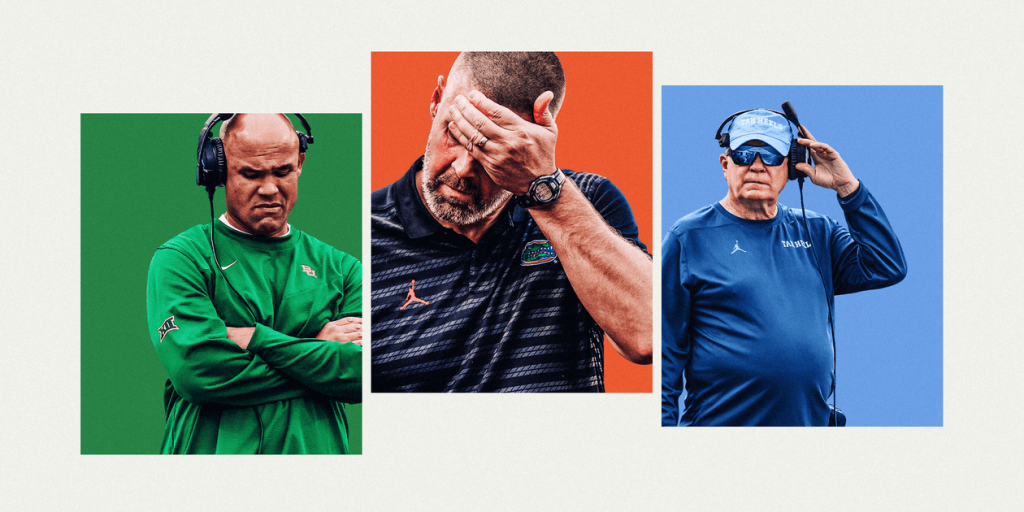The midpoint of the college football season has seen a slower spinning coaching carousel, due mostly to the new 12-team College Football Playoff and a high level of turnover in the previous two seasons. This article gives a midseason overview of the current coaching landscape, with input from numerous industry sources.
In the AAC, the temperature checks for Mike Houston of East Carolina, Mike Bloomgren of Rice, Stan Drayton of Temple, and Trent Dilfer of UAB range from “warm” to “hot”. Houston and Drayton might buy more time with wins in the season’s second half, while Bloomgren and Dilfer are both under pressue due to losses and outside circumstances.
The ACC, Big 12, Big Ten, and Conference USA leagues have their own hot-seat situations. Mack Brown of North Carolina, Dave Aranda of Baylor, and Mike Locksley of Maryland have all been facing pressure due to underwhelming performances and potential time for change. Ryan Walters of Purdue is in a similar situation, but with a longer timeline and more patience from the program. While Stan Cumbie of Louisiana Tech is getting hotter due to recent losses.
Coaches under scrutiny in the MAC, Mountain West, and SEC include Mike Neu of Ball State, Tim Skipper of Fresno State, Nate Dreiling of Utah State, Sam Pittman of Arkansas, and Billy Napier of Florida. These coaches face various pressures—lackluster seasons, poor form, and historical lack of patience from their respective universities—but some could potentially turn things around with important wins and improved end-of-season performance.
In the Sun Belt Conference, Shawn Clark of Appalachian State and Butch Jones of Arkansas State share a trajectory of declining performances. Clark’s past accolades and community support may not be enough if Appalachian State continues losing, while Jones seems poised to lead his Red Wolves to another bowl game. Will Hall of Southern Miss faces an uphill battle, and a very hot seat, due to consecutive seasons of disappointing performances.
Overall, the 2021 college football season holds potential for coaching changes due to a variety of factors, including on-the-field performance, university expectations, and long-term objectives. It remains to be seen how the rest of season will unfold and which coaches will effectively navigate these challenges.


